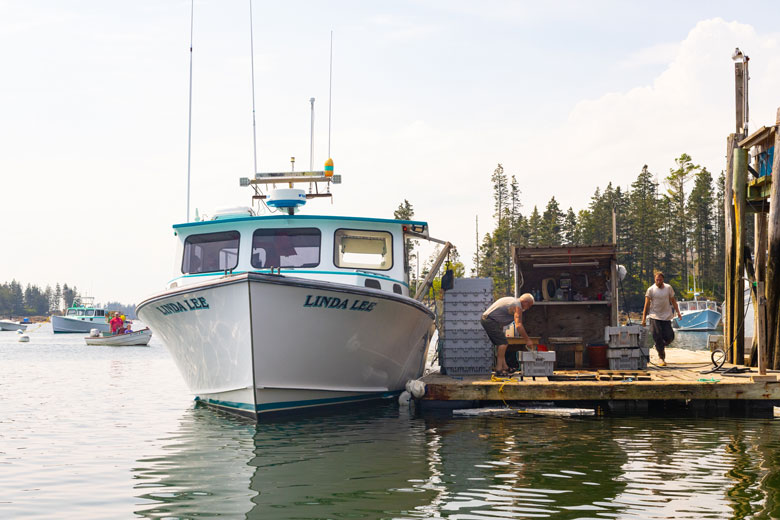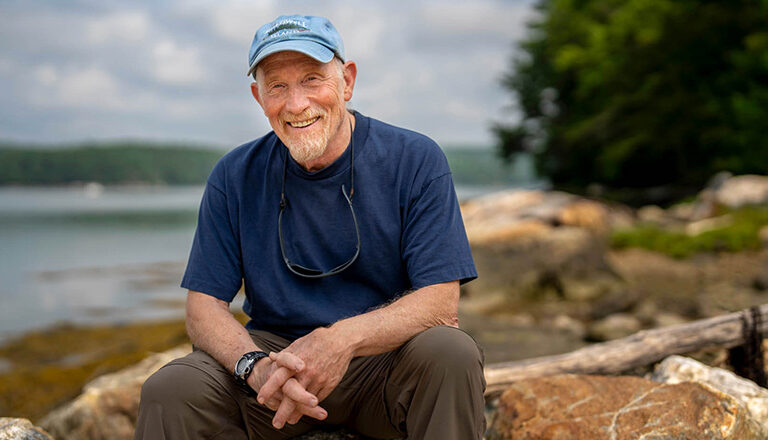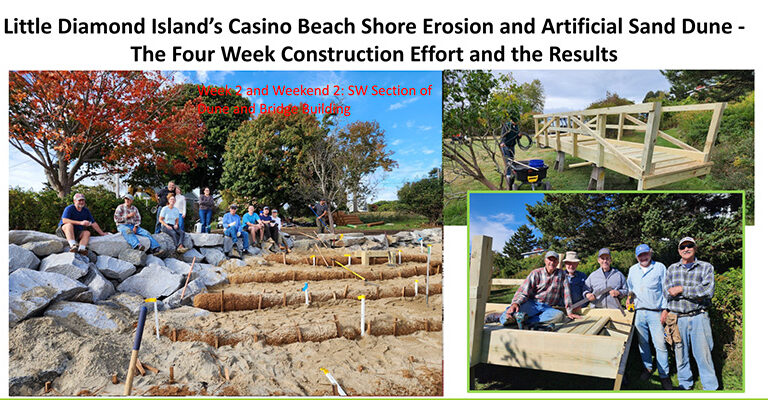From the shore, the life of Maine’s lobstermen may look idyllic. They work their own hours and set their gear wherever they want.
They enjoy spectacular sunrises and vistas of the open sea and the magnificent coast. And, at least from that shoreside perspective, they are unfettered by the constraints that limit most who work ashore.
Of course, that’s bunkum.
Lobstermen do set their own hours, but most hit the water long before dawn and work well into the afternoon. And where they can set the hundreds of traps they fish is limited both by law—generally lobstermen may set their gear within three miles of shore and only in the defined lobster management zone in which they’re registered—and by local convention.
No fisherman has legal claim to any particular piece of the ocean floor, but generations of Maine lobstermen have informally marked out sections of fishing bottom where strangers who set gear may find buoy lines tied in knots when they come back to haul. And those sunrises and vistas? Maine lobstermen spend a lot of their time poking around in dungeon fog and near zero visibility or struggling to work their gear in seas that would keep any reasonable recreational boater snug at the dock.
But those travails aren’t the worst of it.
Rough seas, cold rain, blinding fog, they’re all parts of the life that lobstermen freely choose. What they haven’t chosen, and what many lobstermen hate, is the sense that they are under government surveillance whenever they are fishing and, for some, even when they aren’t.
The rationale behind installation of the trackers is, according to DMR, “to collect high resolution spatial and temporal data…”
Since the beginning of 2023, Maine lobster harvesters have been required to report detailed information about their fishing activity to the state Department of Marine Resources on a daily, or trip level, basis. The reports may be filed either by using an app, “VESL,” via smartphone or tablet, or by using DMR’s computer-based “LEEDS” program. Reports must be filed at least monthly, and the penalty for not filing is the inability to renew the required annual lobster harvester’s license.
Kristin Garabedian, a community development officer at Island Institute, has been talking with lobstermen and helping them learn the intricacies of the reporting system which, she said, calls for “a lot of information at a granular level” using systems that can be “confusing and difficult.”
That’s an understatement.
The LEEDS report for each trip calls for specific information:
• the number of traps, and the number of multi-trap trawls, hauled
• the total number of traps and buoys in the water
• the depth at which the traps are set
• the number of crew
• how long the traps “soak” (stay in the water between hauls)
• the length of the trip in hours, the location where traps were hauled, based on nautical charts showing each of the state’s lobster management zones divided into numbered, roughly 10-square-mile sections.
The reports also call for the quantity of lobster landed and information about where that occurred, whether at a dealer or elsewhere.
According to Garabedian, lobstermen have expressed “a lot of frustration,” both about the complexity of the reporting systems and the fact that the fishermen are not able to access their own data once it has been submitted. And some fishermen just don’t have access to the technology that reporting requires.
“The requirements for 100% of Maine lobster fishermen to report landings and for federally permitted lobster vessels to install trackers are now providing a complete picture…”
Hilton Turner, president of the Downeast Lobstermen’s Association and a longtime Stonington lobsterman, raised the same issue recently while talking about the many problems inherent in the reporting system. Many lobstermen, especially the older ones, don’t have computers, and some don’t even have smartphones. A friend of Turner’s, like many lobstermen who aren’t technologically savvy, pays someone to file his reports, but he still has to manually compile the data for every trip.
Turner’s wife, a teacher, does his filing, presumably on an unpaid basis.
“If it weren’t for my wife, I’d have it all messed up,” he said.
Most lobstermen who fish only in state waters, and not in federal waters outside the three-mile limit, rely on LEEDS rather than the smartphone VESL app that fulfills both state and federal reporting requirements.
Lobstermen with permits to fish in federal waters have even more to deal with. In addition to the required reporting, each boat must be equipped with an electronic vessel tracker that operates 24 hours a day, seven days a week, and transmits the vessel’s position via cellular service once per minute while the boat is moving and every six hours when it isn’t underway.
The only time the tracker may be turned off is if the boat is powered down for at least a month. That’s usually during the winter when many boats are ashore.
The rationale behind installation of the trackers is, according to DMR, “to collect high resolution spatial and temporal data to characterize effort in the federal American lobster and Jonah crab fisheries for management and enforcement needs.” That will “improve stock assessment, inform discussions and management decisions related to protected species and marine spatial planning, and enhance offshore enforcement.”
Turner’s son fishes in federal waters, reports via VESL, and has a tracker on his boat. He regards the reporting system as “a POS” that frequently malfunctions, or spits back data or even changes what has been entered.
Despite complaints about required universal reporting, recently appointed DMR Commissioner Carl Wilson said the collection of detailed landings and fishing data is critical for Maine’s lobster industry.
“The requirements for 100% of Maine lobster fishermen to report landings and for federally permitted lobster vessels to install trackers are now providing a complete picture of effort in Maine’s lobster fishery as well as greatly improved spatial information on where the fishery is occurring,” Wilson said in late June. “This is critical for targeted, effective regulations that maximize resource protection and minimize adverse impacts to commercial fishing, whether in management of the lobster fishery itself, or the pending federal whale regulations.”
Turner understands the need for good data but, unlike Wilson, he has to deal with the reporting requirements on a daily basis and has a different perspective about them.
Filing those reports “every day, year after year” can be frustrating, Turner said. “We don’t want to be bookkeepers,” he said. “We just want to be working men.”





